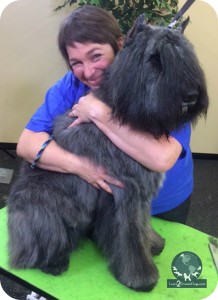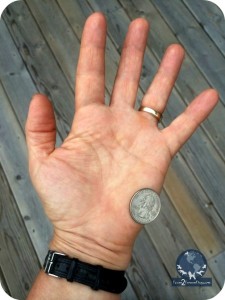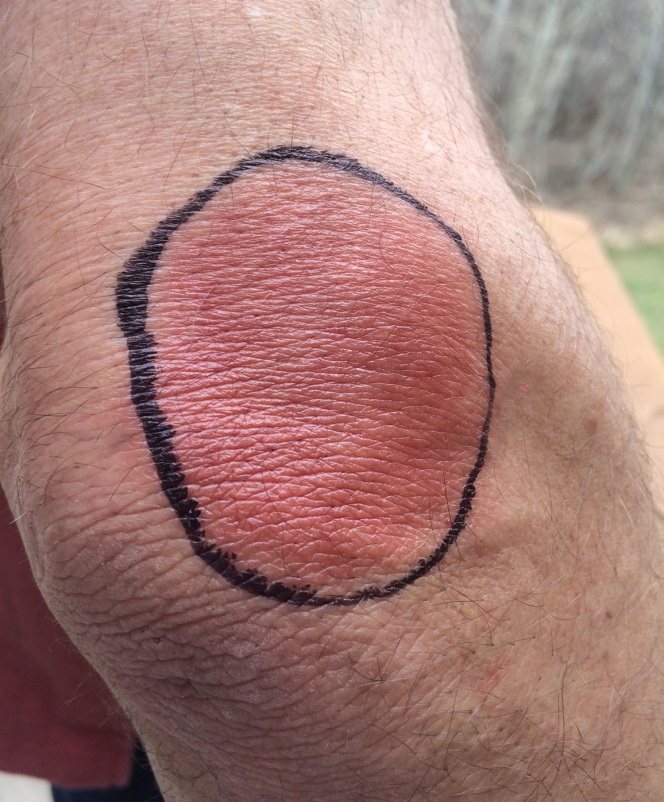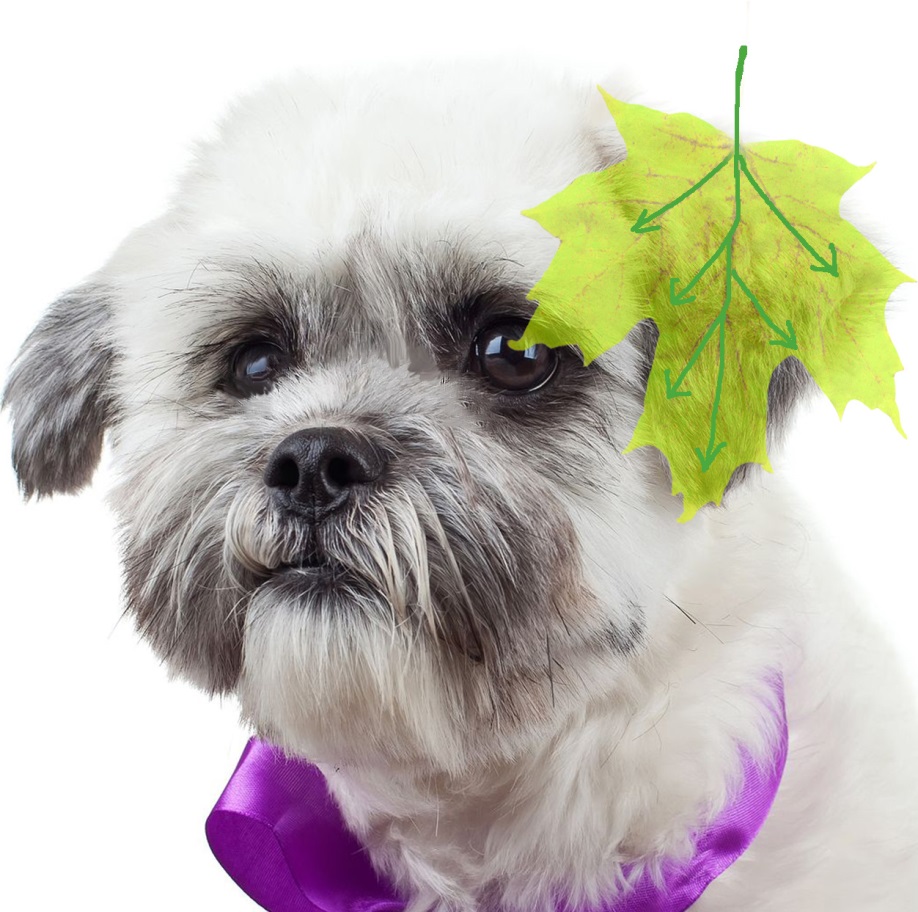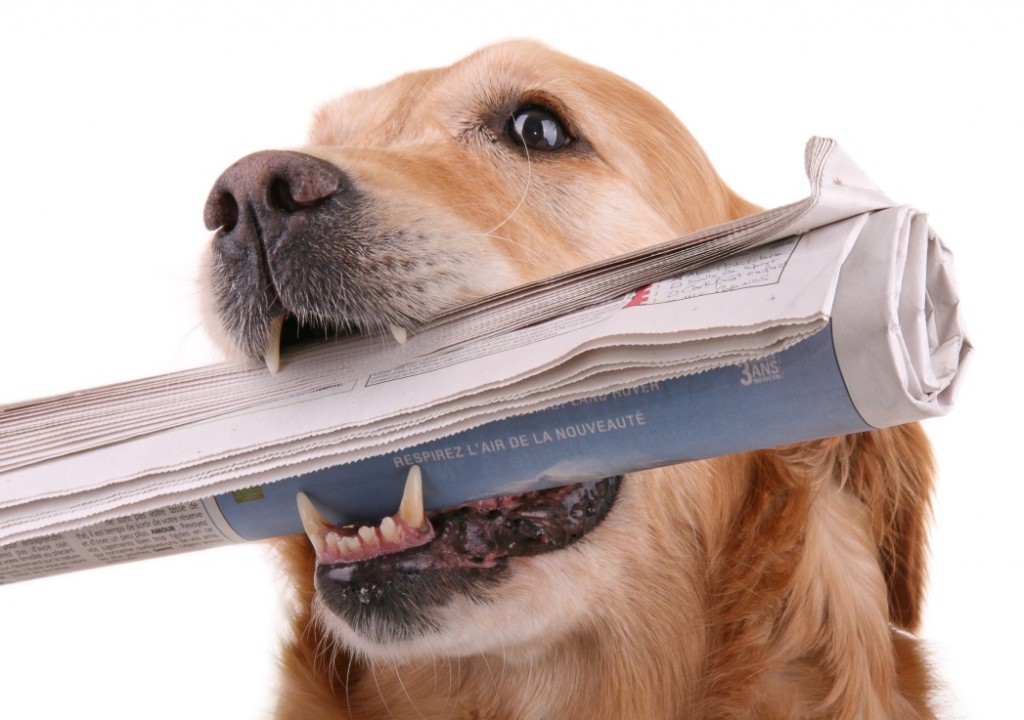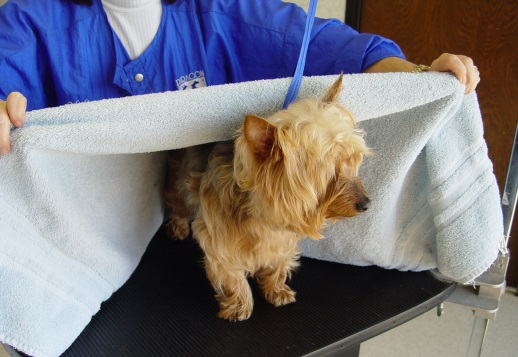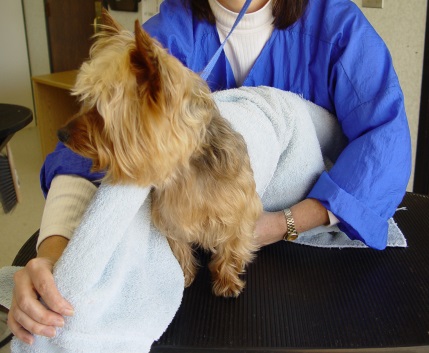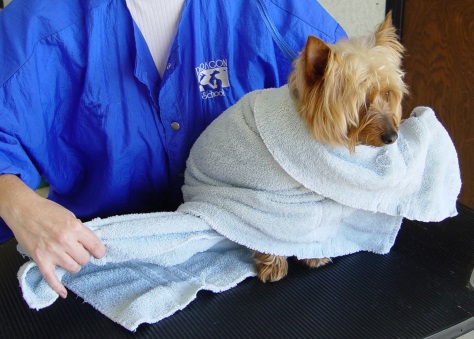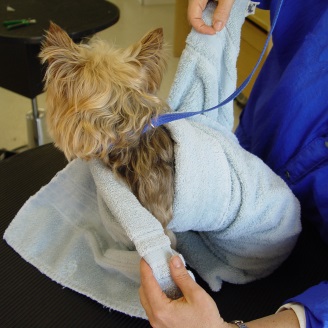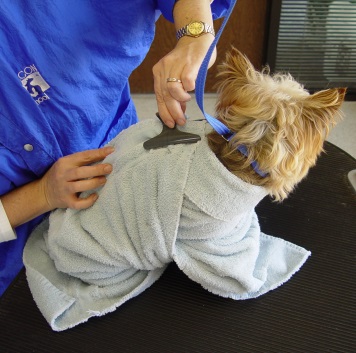 This always shocks me. A competitor or a workshop participant presents me with a DIRTY DOG for evaluation. A dirty dog?! No joke – it happens all the time.
This always shocks me. A competitor or a workshop participant presents me with a DIRTY DOG for evaluation. A dirty dog?! No joke – it happens all the time.
Nails are not trimmed correctly… coats are not dried properly or completely… or worse yet, there are still mats and tangles left in the coat. These are all constant problems I see all the time. Not only at in the ring or at hands-on events, but in salons with every day grooming too.
To me, bathing and drying are the most critical parts of any groom. One bather can make or break your entire grooming department.
Here are 7 skills I look for in an indispensable groomers’ assistant (AKA the bather!) All 7 of these skills must be MASTERED in if you want to be highly valued in your grooming salon, if you want to move ahead in your career, or before you can you gather loads of glowing clients.
1. Be able to identify popular breeds
Anybody working professionally with pets needs to be able to identify the top 15 or 20 breeds that regularly come into your salon. It’s the fastest way for groomers to be able to communicate to one another.
2. Be able to handle pets safely and compassionately
How many times have you heard others (or maybe even yourself) say, “This dog is driving me nuts!” Impatient treatment of a pet is never acceptable. If you lose control, you can bet that you won’t have clients for long. Being able to understand canine body language is job requirement #1. If you are going to win the pet’s trust and cooperation, you must be able to speak its language. It will keep you and the pet safe. It will also make the entire experience much more enjoyable for all parties.
3. Understand the many different coat types found on individual pets
Each coat type has special needs that need to be addressed in the bathing and drying process to get the best results. A Beagle has different bathing and drying needs than a Standard Poodle. The same holds true with a coat on a Golden Retriever or an Airedale Terrier. A talented bather will instantly be able to identify dogs that possess simple coats or dogs that are going to be time-consuming and a challenge.
4. Bathe the dogs until their coats squeak
If they don’t squeak, they are not clean.
Period.
This is absolutely the foundation of every fabulous grooming job. I cannot stress its importance enough. There are many products on the market to help achieve superior results in only one or two baths. Even if you use the best shampoos on the market, the dog will not get squeaky clean unless they are rinsed thoroughly. Rinse until the water runs clear and you hear the ‘squeak’ when you push the water through the coat. And not just the easy to see or reach parts. Get soap and water to the undercarriage, under the ears, and the special parts. If the whole dog isn’t clean – it’s still dirty. Nothing wastes time or money more than having to re-bathe a dog because you didn’t do the job right the first time. There’s an old saying: if you don’t have time to do it right, when will you have time to do it over? Get it right the first time.
5. Dry the coat to perfection
Most of the time, this will mean utilizing a form of active drying. There are several drying methods and combinations to choose from, based on the coat type, trim, and the pets’ tolerance. Incorrect techniques or careless attention to drying will waste more time than almost anything else in the grooming process. In most cases, high velocity and stretch (or fluff) drying techniques will need to be used to get superior results. Oh, and the pet needs to be bone dry too!
6. Learn efficient and SAFE brushing techniques
Systematic brushing is the only way to effectively work through a coat and get right down to the skin. Selecting the correct tool for the coat type will be important. Knowing how to hold the tool along with how much pressure to exert is also important. Not enough pressure and you will not be efficient. Too much pressure and you’re going to make the pet uncomfortable and could cause injury. The key is to work methodically and gently over the entire dog – right down to the skin until a wide tooth comb can easily be pulled through the fur.
7. Nails, ears, and glands
Trimming nails and cleaning ears is just an automatic process when it comes to grooming pets. If it is not done – or not done well – it’s considered sloppy. Clients don’t want to spend their hard-earned money on sloppy work. Stylists executing haircuts should not have to go back and double-check this type of preliminary pre-work. Some salons routinely check and/or express anal glands. Whatever your salon option is, you should follow their guidelines.
Being a bather – or being a groomers’ assistant – can be extremely rewarding. However, it does carry a lot of responsibility. Many of these skills are considered the foundation of all grooming.
If you need detailed information in how to do any of these skills, become a member of Learn2GroomDogs.com and watch the Core Grooming Skills & Techniques Skill video lessons (click here for a complete video list) or review the front section of my book, Notes From the Grooming Table. Learning the skills does take time. They take dedication and focus to master them. You should never underestimate the value of strong foundation skills. They will form the building blocks of a long and successful career. Mastering these core skills to an absolute fault will ultimately determine how successful you will be in your career. (For more tips on how you can be more efficient and make more money, read my blog, The Need for Speed.)
Remember: every owner faces a choice when it comes to grooming. They can come to you, do the job themselves, not have the pet groomed all… or go down the road to someone else. Make sure they make the right choice by sticking with you.
Happy trimming,
Melissa

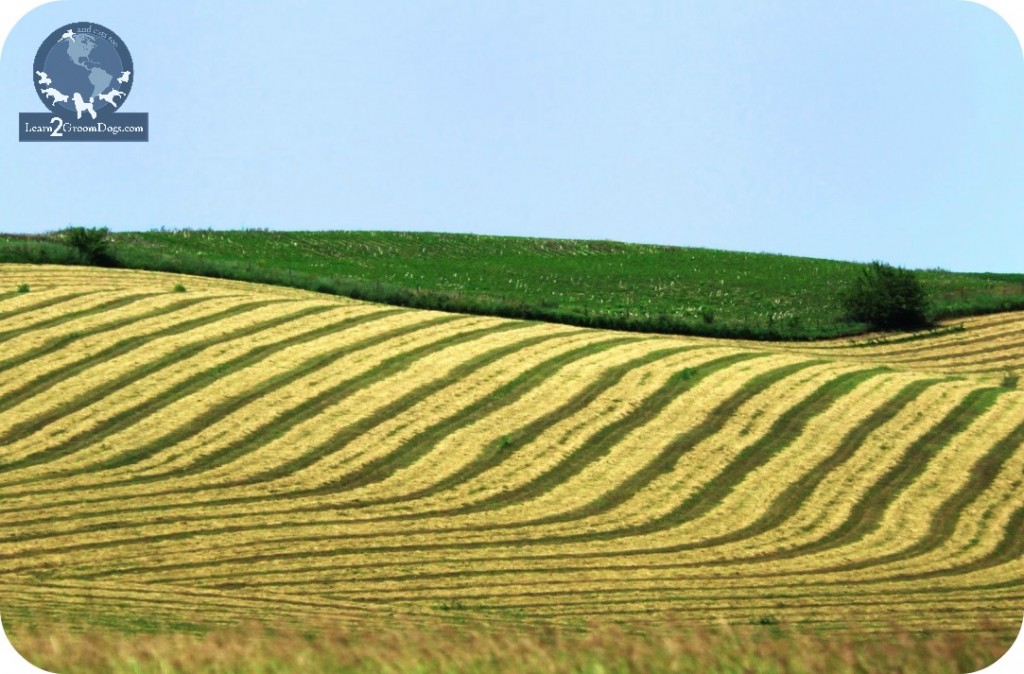 It’s been over 35 years since that first time. I still remember standing in awe, watching a talented pet groomer give a dog a haircut. She handled her clippers with ease. The long fur fell away like a hot knife through butter. The end result was smooth and gorgeous. And she was fast – super fast. She made the whole process seems so simple.
It’s been over 35 years since that first time. I still remember standing in awe, watching a talented pet groomer give a dog a haircut. She handled her clippers with ease. The long fur fell away like a hot knife through butter. The end result was smooth and gorgeous. And she was fast – super fast. She made the whole process seems so simple.



